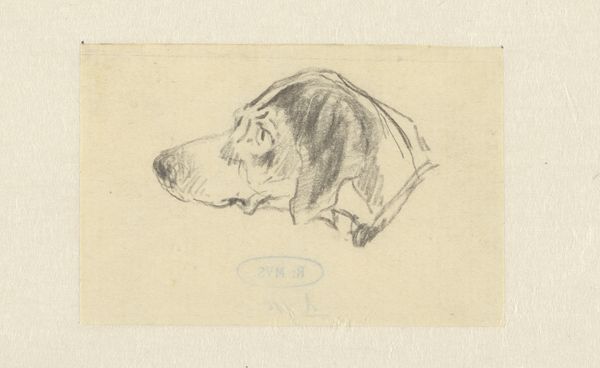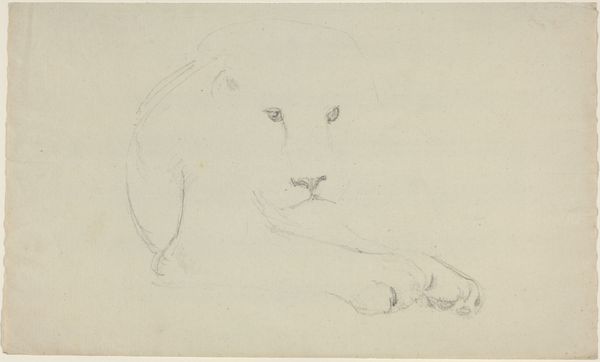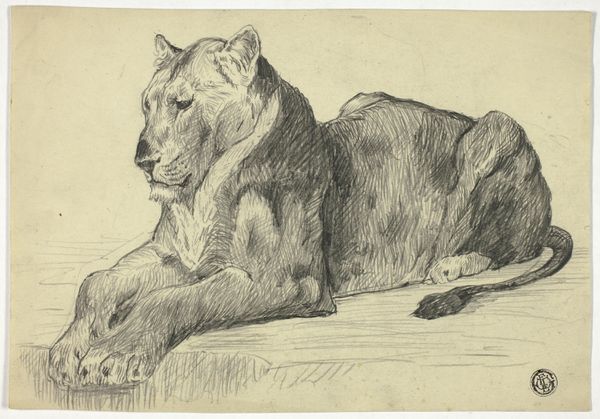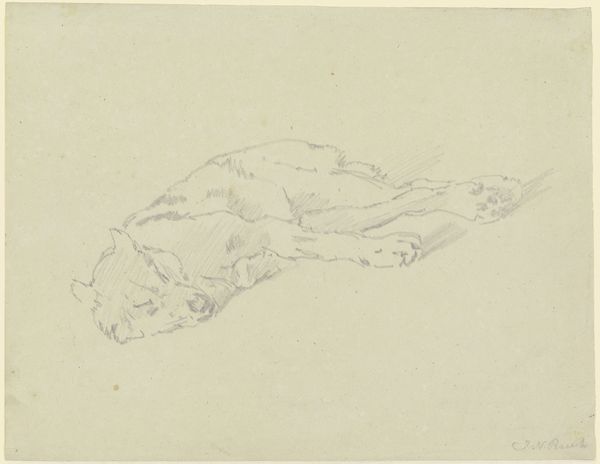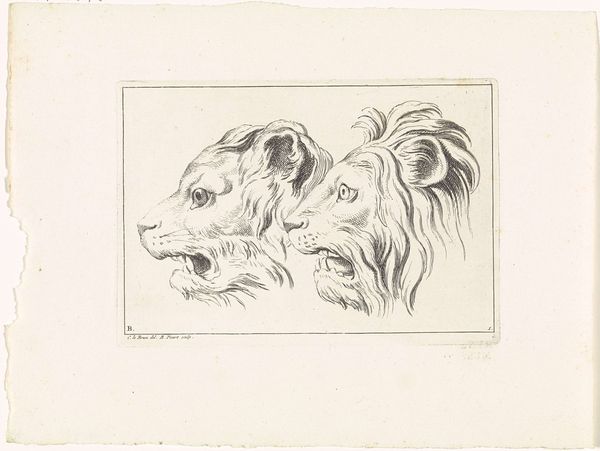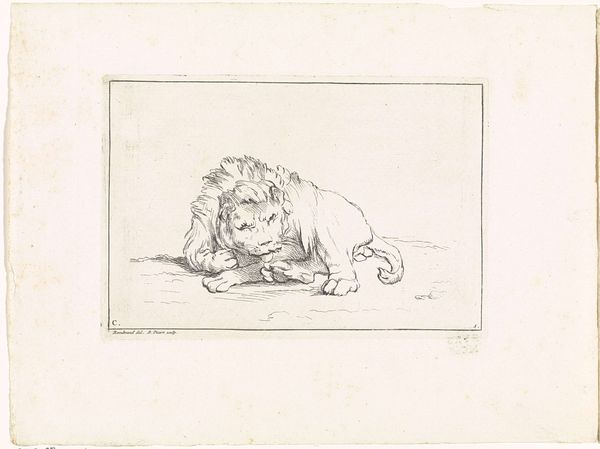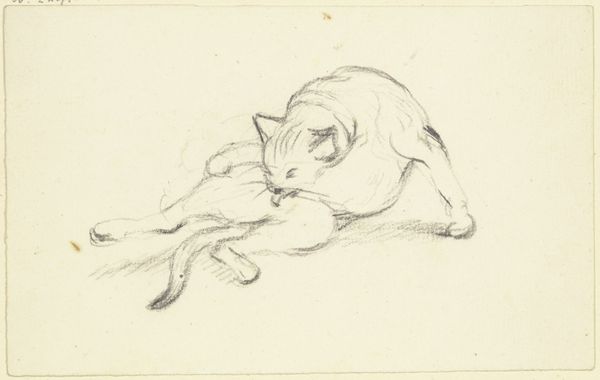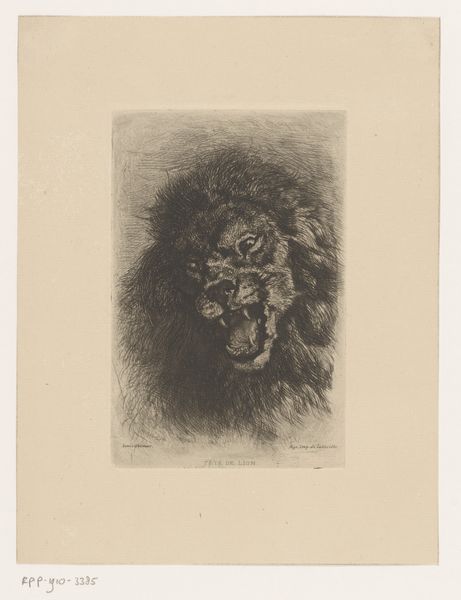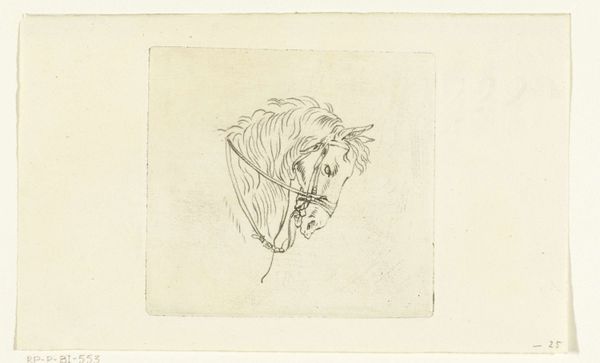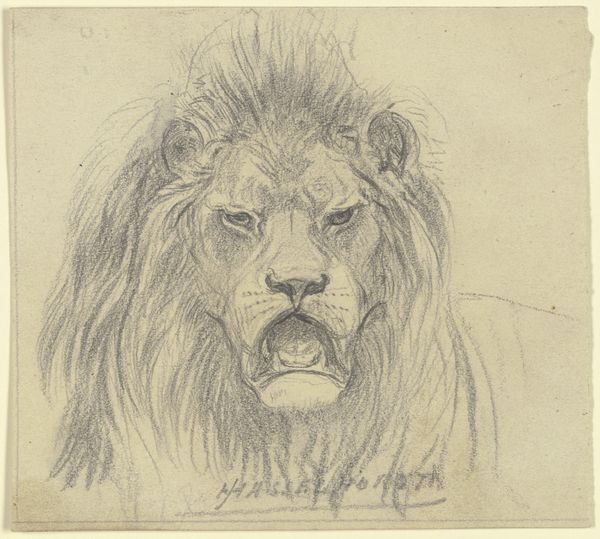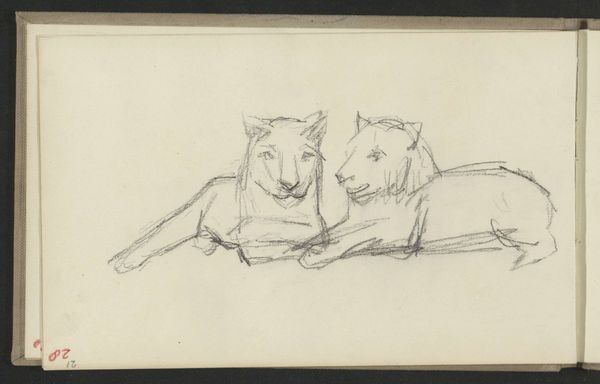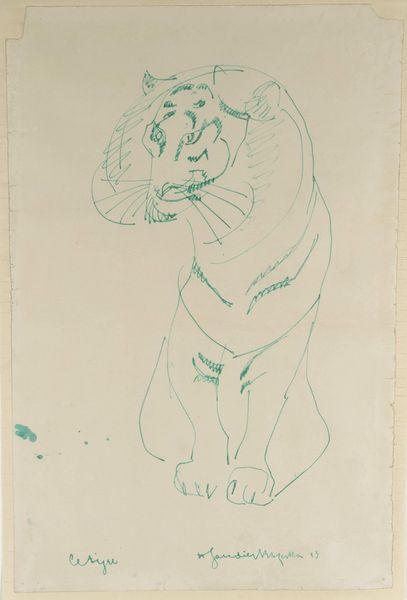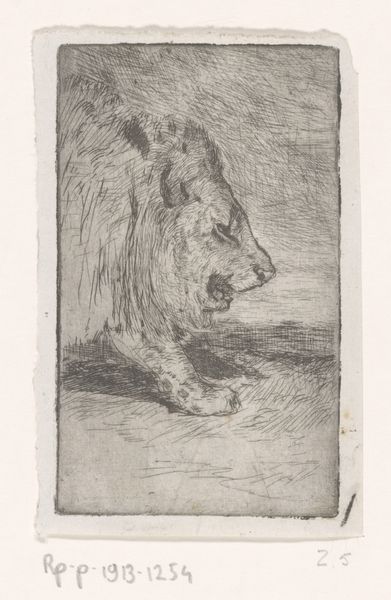
drawing, pencil
#
drawing
#
animal
#
pencil sketch
#
figuration
#
pencil
Dimensions: 310 mm (height) x 238 mm (width) (bladmaal)
Curator: This pencil drawing, entitled "Løve, der spiser," or "Lion Eating," was created in 1903 by Svend Rathsack, and is part of the collection at the Statens Museum for Kunst. It has a quiet, almost melancholic air about it, wouldn’t you agree? Editor: I find the spare use of the pencil very compelling. The material reality of this sketch – the grain of the paper, the subtle variations in the graphite – it makes me think about Rathsack’s physical process in creating the piece, almost as if it captured a singular work moment. Curator: It’s intriguing how he chose to depict a lion in such a domestic scene, captured so intimately. Traditionally, lions represent strength, royalty. To show it… feeding feels quite raw, a very visceral act and far removed from those earlier depictions of power. Editor: Absolutely. Considering the societal context of early 20th-century art, Rathsack pushes against the elevated status of some subjects while humanizing this very basic action. It asks, what labour goes into simply sustaining existence, for human and beast alike? Curator: You bring up a good point about existence because it looks very contained in on itself, the act of consumption. One sees lions as solitary hunters, it is so internal and removed from human connection. Do you think he wanted to isolate this symbolic king? Editor: Perhaps, but more importantly, the labor required for every part to make such sustenance exist must be factored. As for his chosen materials, was this sketch intended as a study for a more finished work, or does its seemingly unfinished state serve a purpose? The materials themselves suggest accessibility; pencil and paper, the daily making, making its final product a social and economic piece itself, wouldn't you say? Curator: The drawing prompts reflection on changing cultural attitudes and a subtle reinterpretation of traditional symbolism. His decision to render the subject so softly could suggest a departure from established traditions for animal portrayal. Thank you for sharing such illuminating ideas about its potential creation. Editor: Likewise, your expertise regarding cultural meaning has certainly changed how I saw its social process.
Comments
No comments
Be the first to comment and join the conversation on the ultimate creative platform.
